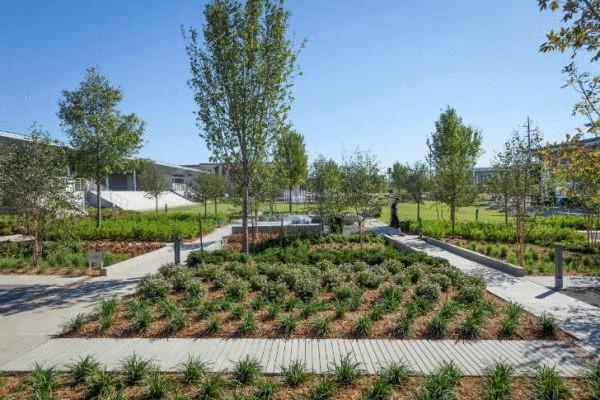Guthrie Green Park, operating by solar and geothermal energy
 Bashny.Net
Bashny.Net

Opened in September in downtown Tulsa's Guthrie Green Park was a great place for relaxation and entertainment. The Park consists of large green lawns, a huge number of fountains and a stage for various events, which operates from solar panels. The developers of the Park SWA Group chose its location the former loading Bay for trucks.

Created an unusual urban ecological structure not only serves as a new green space in the city centre, but also acts as a large geothermal source, providing energy efficient heating and cooling for adjacent to the Park.

Earlier in the Park Guthrie Green was a 2.7 acre loading area – the so-called concrete jungle. Now it is a green oasis that attracts many people and which houses gardens, interactive fountains, open areas, and "green room" with walls of braided vine, a multipurpose lawn for events and festivals, as well as the pavilion café at 11,200 square feet.

Developed by Sausalito, California office of SWA Group, the Park is located across the street from the New woody Guthrie Archives, which was formerly the Tulsa Paper Company building. Family Foundation George Kaiser has funded both of these projects are part of the urban landscaping program in the arts District of Brady.

Ken Levit, Executive Director of the Family Foundation of George Kaiser, said: "Its development, SWA has helped our community to transform the Central part of the city of Tulsa, which began already to forget. From an abandoned loading area, this place has turned into a magnificent oasis Guthrie Green, where the townspeople. The Park immediately became a popular place to spend leisure time, where sounds and music are festivals or picnics almost every Sunny day of the week in our city." At the same time Park is more than just a fun place for games or cool when it's hot outside.
Guthrie Green – giant geothermal source heat pump systems, extending deep under the Park. During the reconstruction of the loading area and after removal concrete pavement drilled 120 wells 500 feet deep as part of the 'geo-exchange' system, which produce 600 tons (7.2 million BTU/hour) hot and cold water which is then distributed via underground pipes to serve 120,000 square feet of nearby non-commercial users, as well as the pavilion café, and bathrooms.
Source: /users/276
Tags
construction
architecture and design
fountain
Park
solar energy
USA
oasis
geothermal energy
lawn
guthrie green park
guthrie green
See also
Concept headquarters as the big green mechanism
Msheireb - the future of Qatar
Scholars’ Green Park - a new typology of student Park from the canadian architects
The winners World Press Photo 2014
Ecotourism in Bali: Green Village – all made of bamboo
Tunnel with mushrooms: London version the High Line
5 beautiful places in Russia where you can relax otsanktsionirovannomu official
City with beautiful beaches
Bamboo village designer Elora Hardy
The rink of Donald trump in new York

















